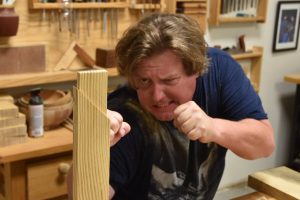We may receive a commission when you use our affiliate links. However, this does not impact our recommendations.
 In the late ’80s and early ’90s you could visit a strip club and it wouldn’t be sleazy. The reason: Mike Tyson. He would simply walk through opponents with devastating power in the first few rounds. Nobody wanted to order the expensive pay-per-view at home with the odds of it being over in seconds. So the strip clubs could collect a door fee, a two-drink minimum and be done with the boxing crowd within an hour.
In the late ’80s and early ’90s you could visit a strip club and it wouldn’t be sleazy. The reason: Mike Tyson. He would simply walk through opponents with devastating power in the first few rounds. Nobody wanted to order the expensive pay-per-view at home with the odds of it being over in seconds. So the strip clubs could collect a door fee, a two-drink minimum and be done with the boxing crowd within an hour.
That was Tyson at his peak, but not his prime. In his prime, he was more finesse than power and had a lot to teach woodworkers.
Early in his career Tyson developed such a solid foundation with footwork that he could execute inventive combinations that accentuated his natural speed and power. Yet his legacy rarely considers that foundation which made him a devastating power hitter at his peak. Luckily woodworkers don’t have to consider footwork as much as a boxer because our wood isn’t fighting back. And if it does, we burn it.
But the idea of using your body to generate movement away from your core muscles with power, accuracy and efficiency is the same in boxing and woodwork. We need to develop footwork that creates a solid foundation to anchor our motion.
Early in my woodworking career my “Spidey-Sense” worked overtime. As if in a gunfight, I’d cut dovetails with my feet and shoulders squared to my foe. And with each stroke my opponent would push back – rocking me on my heels. At the lathe, long skew exercises would teeter me on one leg. That first long rip on the table saw…. Each of those motions had a reactive force that knocked me off balance. My foot placement created a weak foundation. They turned my legs into a pivot point instead of a brace. Thus the “Spidey-Sense” saying, “Things are not right.”
Woodworkers need to know that isolating body movement from tool movement will improve results. A strong foundation involves balance between three points, your feet being the most important. Ignore that principle and you might as well hum “Girls, Girls, Girls” from Motley Crue as you spin wildly around that pivot point.
— Shawn Graham
For instruction on using your body effectively in the shop, check out Jeff Miller’s video “The Foundations of Better Woodworking.”
Here are some supplies and tools we find essential in our everyday work around the shop. We may receive a commission from sales referred by our links; however, we have carefully selected these products for their usefulness and quality.









Did we really just get a strip club analogy as a means of teaching footwork to woodworkers? Way to knock all that work about trying to bring the message of woodworking to a diverse, younger, and more gender inclusive crowd right down the toilet. Are you comfortable with PWM having this message associated with your brand, Megan? And at the same time that you’re posting an editorial about bringing more inclusive messages from those other than white men into the magazine and the woodworking community? Leave the strip club reference out of this. It’s not needed, it’s juvenile and it cheapens the PWM brand considerably.